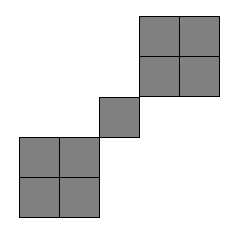Flags that determine the behavior of the dot removal process.
| Visual Basic (Declaration) | |
|---|---|
<FlagsAttribute()> Public Enum DotRemoveCommandFlags Inherits Enum | |
| Visual Basic (Usage) |  Copy Code Copy Code |
|---|---|
| |
| C# | |
|---|---|
[FlagsAttribute()] public enum DotRemoveCommandFlags : Enum | |
| C++/CLI | |
|---|---|
[FlagsAttribute()] public enum class DotRemoveCommandFlags : public Enum | |
| Member | Description |
|---|---|
| None | No flags. |
| UseDpi | The unit of measure for all properties of the DotRemoveCommand is thousandths of an inch. Use the image's DPI to convert to pixels. This allows the processing of many images with different DPI. If this flag is not set, the unit of measure for all properties of the DotRemoveCommand is pixels. |
| SingleRegion | For each dot encountered by DotRemoveCommand, if the DotRemoveCommandEventArgs.Status is set to RemoveStatus.Remove, the removed dot is added to an internal single region. If it is set to RemoveStatus.NoRemove, the dot is not added to the single region. When DotRemoveCommand returns, either DotRemoveCommand.ImageRegion or DotRemoveCommand.Region will reference a region that contains all the removed dots. If LeadRegion is also set, DotRemoveCommand.ImageRegion will be updated with a shallow copy of image that has a LEAD region that contains all the removed dots. If LeadRegion is not set, DotRemoveCommand.Region is updated with a Windows region that contains all the removed dots. When the region (either LEAD or Windows) is no longer needed, it must be disposed (either region allocated in DotRemoveCommand.ImageRegion or DotRemoveCommand.Region). |
| LeadRegion | When DotRemoveCommand returns, DotRemoveCommand.ImageRegion is updated with a shallow copy of the image that also contains a region with all the removed dots. This flag must be used in conjunction with SingleRegion. |
| CallBackRegion | The DotRemoveCommandEventArgs.Region property is updated with a Windows region that contains the current dot to be removed. Setting this flag lets the user create his or her own composite of removed dots by combining the regions received, if DotRemoveCommandEventArgs.Status is set to RemoveStatus.Remove. The regions can be combined using a logical OR operator. Combining all regions received when the DotRemoveCommandEventArgs.Status is set to RemoveStatus.Remove results in a region identical to the region created when SingleRegion is set in DotRemoveCommand.Flags. For an example, refer to DotRemoveCommand. When the region received by the DotRemoveCommandEventArgs.Region property is no longer needed, it must be released. |
| ImageUnchanged | The resulting image is unchanged. |
| UseSize | Use the DotRemoveCommand.MinimumDotWidth, DotRemoveCommand.MinimumDotHeight, DotRemoveCommand.MaximumDotWidth, DotRemoveCommand.MaximumDotHeight properties of the DotRemoveCommand to indicate the size of the dots to remove. If this flag is not set, default values for the four sizes will be used. These defaults are as follows: DotRemoveCommand.MinimumDotWidth = 1, DotRemoveCommand.MinimumDotHeight = 1, DotRemoveCommand.MaximumDotWidth = 2, DotRemoveCommand.MaximumDotHeight= 2. |
| UseDiagonals |
Considers pixels that are diagonal as part of the dot. Consider the "speck" below consisting of nine pixels.
 If this flag is used, this speck is considered a single dot that is 5x5 pixels. If this flag is not used, the speck is considered three dots (2x2, 1x1, 2x2). |
You can use a bitwise OR (|) to specify one or more flags.
System.Object
System.ValueType
System.Enum
Leadtools.ImageProcessing.Core.DotRemoveCommandFlags
Target Platforms: Microsoft .NET Framework 2.0, Windows 98, Windows NT 4.0, Windows Millennium Edition, Windows 2000, Windows XP Home Edition, Windows XP Professional, Windows Server 2003 family




